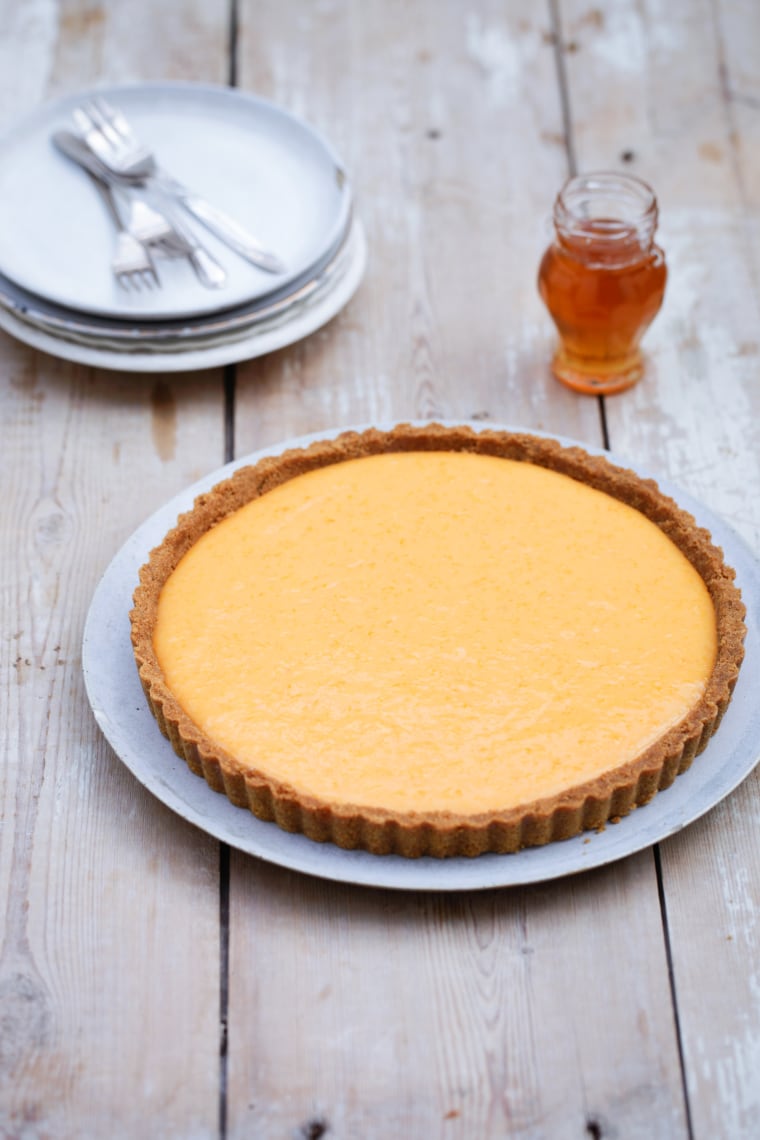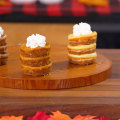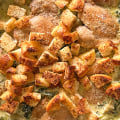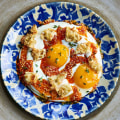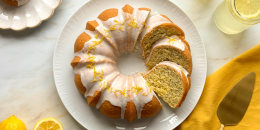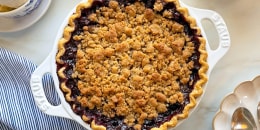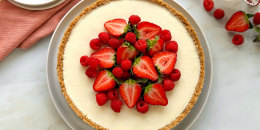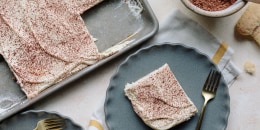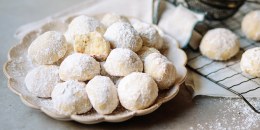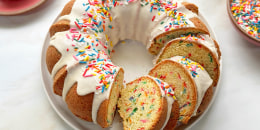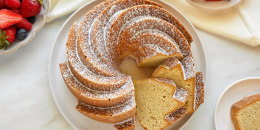Chef notes
Since my Seville Orange Tart in "How To Eat," I’ve never stopped feeling the urgent need to use Seville oranges for their short season between December and February (as you will see elsewhere in this book), but that bitter orange taste is too good to forsake during the long months that Seville oranges are not about. Then I simply try to recreate their floral sharpness by using regular orange and lime juices in something approximating a 2:1 ratio. And although I am not someone who uses the freezer as one great, efficiently stacked culinary filing cabinet, I do try and make little packages of the zest and juice of four Seville oranges just for this; then when I run out, I use the eating orange and lime combo.
This is more than a simplified revision of the "How To Eat" recipe: it uses a crushed gingersnap-and-butter base in place of home-made pie dough, and is even more acerbically – and excitingly – sharp than its predecessor. I love its cheek-squeaky, sherbetty bitterness, but I serve a small pot of good honey alongside, and urge everyone (to the point of irritation) to drizzle some over as they eat.
I have to say, that when Seville oranges are in season, this tart looks like a disc of winter sunshine on the plate – and tastes like it, too. I love it particularly after the Asian-Flavored Short Ribs or Italian Veal Shank Stew, but don’t want to restrict its application in any way. I must also add that the curd is just as fabulous spread over toasted crumpets or on a sliced pullman loaf.
Ingredients
- 9 ounces gingersnaps (approximately 2 1/4 cups crumbs)
- 5 tablespoons soft unsalted butter
- 3 extra large eggs
- 2 egg yolks
- 1/2 cup superfine sugar
- 1 cup zest and juice of 4 Seville oranges or use 1/2 cup lime juice (from 2-3 limes) and 1/2 cup plus 1 tablespoon orange juice (from 1 large or 2 medium oranges)
- 1 1/4 sticks (10 tablespoons) soft unsalted butter, cut into 1/2-inch cubes
- Good honey
Preparation
Use a 1 x 10-inch loose-bottomed, shallow tart pan (approx. 2 inches deep).
Blitz the gingersnaps in a food processor until they are crumbs, then add the butter and process again, patiently waiting until it begins to clump and look like damp, dark sand. If you don’t have a food processor, put the gingersnaps in a resealable plastic bag, and bash with a rolling pin or similar heavy implement, even if it has to be one with less comedy value. Melt the butter, and transfer the crumbs to a bowl. Mix in the melted butter until the crumbs are evenly coated.
Tip into your tart pan, and carefully spread the cookie base all around the pan and up the sides; you can do this with your hands or the back of a spoon.
Put the pan in the refrigerator, to allow the cookie base to harden, for at least 1 hour – although it may take up to 2 hours if your refrigerator is stacked. I often find it easier to get the base done in advance, so it’s coolly ready and waiting, in which case, I do it up to 2 days ahead.
Once your base is set firm you can get on with your curd filling. In a heavy-based saucepan – off the heat – whisk together the eggs (both the whole eggs and the yolks) and sugar, making sure you incorporate them well.
Add the zest (grate gently so you don’t get the pith, too) and juice from the oranges along with the cubes of butter, then put the pan over a medium heat and cook, stirring constantly; I use a small flat whisk for this.
This thickening process will take about 5–7 minutes, but do take it off the heat regularly during this time, while you carry on whisking, to prevent it from getting too hot. Once the curd has thickened, take it off the heat, keep whisking for about 30 seconds, and carry on doing so as you pour it straight into a pitcher (it makes about 2 1/4 cups). Then place a piece of dampened parchment paper on top of the filling (this will stop it forming a skin), and let it cool in the refrigerator for about 30 minutes.
Once the filling has cooled, but not set solid, pour and scrape it into your crumb-lined pan and spread it out evenly.
Let the tart set further in the refrigerator for at least 4 hours (or overnight), and up to 2 days, before unmolding. This is best done while it is still cold – so don’t take it out of the refrigerator for more than 5–10 minutes before you want to cut it. Then serve in slices, with a little pot of honey for people to drizzle over as they wish.
Make ahead note
Base can be made 2–3 days in advance and stored in refrigerator until needed, covered loosely with plastic wrap. Once firm, the base (in its pan) can also be wrapped tightly in a double layer of plastic wrap and a layer of aluminum foil and frozen for up to 1 month. Thaw in refrigerator for 2–3 hours before filling.
Curd can be made 2 days ahead. Fill the tart and refrigerate for about 4 hours, until the curd has become firmer, then tent loosely with foil, trying not to touch the surface of the tart.
Store note
Leftovers can be stored in refrigerator for 2 days. The tart base will soften gradually as the tart stands.
